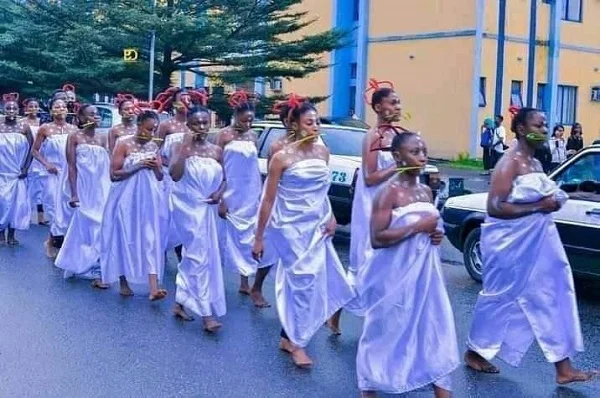
When Serena and Venus Williams take the court at Arthur Ashe Stadium on Thursday night, they will add another line to their résumé: It is the first time a first-round U.S. Open women’s doubles match will be played in a night session at Ashe.
Usually doubles matches, especially in the first round, are limited to smaller courts, where fans often wander between matches. A prime time slot in the largest stadium at the U.S.T.A. Billie Jean King National Tennis Center is a coveted spot — and the tournament has not been shy about displaying Serena Williams, who has said that this U.S. Open is likely to be her last before she retires from playing tennis.
Putting Williams in the first match of a night session in the stadium with the most seats makes sense for the U.S. Open. It’s a chance to sell the most tickets, draw higher TV ratings and pack the surrounding plazas. For the wider tennis world, it’s also a chance to draw new fans to the game before she retires.
Jon Wertheim, a Tennis Channel analyst and author, said a challenge for the United States Tennis Association would be to “alchemize all of this good will.”
“Turn all of these messages about access and toppling conventional wisdom and diversity into a spike in participation,” Wertheim said. “It’s been couched as ‘the secondary ticket market is exploding’ and ‘this is great for TV ratings.’ But the real challenge is turning this short-term uptick into real long-term growth.”
The U.S. Open was blunt about the excitement over Serena Williams after she won her second-round singles match Wednesday night when the tournament said on Twitter, “SO MUCH SERENA CONTENT” in an all-caps post with 31 exclamation points.
And Williams acknowledged the celebratory feel of the tournament in light of her recent retirement announcement.

John Minchillo/Associated Press
“I’ve mostly been kind of blocking everything out, but then at the same time I’ve been embracing a little bit of it because I also want to enjoy the moment,” she said. “I think these moments are clearly fleeting. For me, it’s really about having a little embrace but also understanding that I’m here to focus, do the best that I can this time.”
Even some of the players have been moved by the buzz surrounding Williams. After winning a second-round match against Aliaksandra Sasnovich of Belarus on Thursday, Jessica Pegula, a 28-year-old American, said it had been inspiring to see Williams at the tournament.
“If we don’t have a night match, we all turn on the TV, and we watch because we want to see what’s going on, what’s going to happen, how she’s playing,” Pegula said. “I feel like she’s just soaking up every single point, every single second of being out there and being Serena. I think it’s just been pretty cool to watch.”
Lisa Delpy Neirotti, a professor of sports management at George Washington University, said that as Williams continues her run at the U.S. Open the tournament has to “take advantage of the situation right now because the stars have aligned, and you couldn’t write a better script if you tried.”
“As with any marketer bridge, you have to take every advantage and leverage every opportunity that will promote your sport,” Neirotti said. “Serena Williams right now is a Cinderella story, which every American loves, right? But it’s so much more than tennis.”
Danielle Allen, 30, who described herself as a new tennis fan, flew in from Chicago this week to attend her first U.S. Open. While she didn’t have tickets to see Williams play, she hoped to watch her practice.
“Just a glimpse would be awesome,” Allen said, drinking a honey deuce in the plaza in front of Ashe Stadium. “She’s like our Michael Jordan.”
While men’s tennis has players like Rafael Nadal and Novak Djokovic, women’s tennis will not have a clear superstar after Williams retires.
There was hope that Ashleigh Barty, who has won three Grand Slam tournaments, could fill that void. But in March, she surprised the tennis world by retiring at 25. Iga Swiatek of Poland, the current world No. 1, has won two Grand Slam singles titles, but it’s unclear if she’ll maintain that success. Naomi Osaka, 24, of Japan, has won four Grand Slam events since 2018, but she has struggled lately, including at this tournament, where she lost in the first round.
A study last month by Morning Consult of 2,210 Americans, including 1,513 self-identified sports fans, found that about one-third of Americans were “less interested” in women’s tennis with Williams retiring.

Watching Serena Williams play on opening night of the U.S. Open from a public screen set up at Hudson Yards Public Square in Lower Manhattan on Monday. Anna Watts for The New York Times
But Allen said she would watch tennis more.
“The last recent years, I’m seeing a lot of great new talent come through,” she said, citing Coco Gauff, the 18-year-old American, as an example. “It’s good to see, especially people of color.”
There may be a lull until a dominant force like Williams emerges again, but Wertheim said that over time, one will rise, comparing Williams’s retirement to when Michael Jordan retired from the N.B.A.
“There will be some adjusting and marketing challenges, and there will be some years of parity,” Wertheim said. “Eventually, another star will fill the void. Maybe not a star that wins more than 20 majors, but the sport will prevail. It always does.”
Delpy Neirotti said tennis had lost stars before, pointing to Jimmy Connors and Chris Evert, only for new ones to emerge.
“I don’t think tennis is dead by any means,” she said. “It’s just a new generation.”
FEATURED IMAGE: Serena Williams waved to fans after beating Anett Kontaveit, the world No. 2, on Wednesday night. Michelle V. Agins/The New York Times
By Jesus Jiménez/The New York Times




